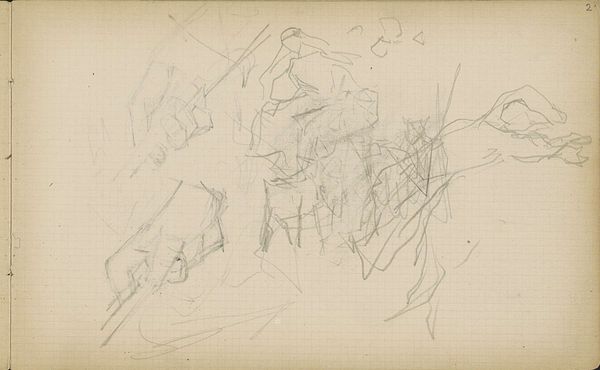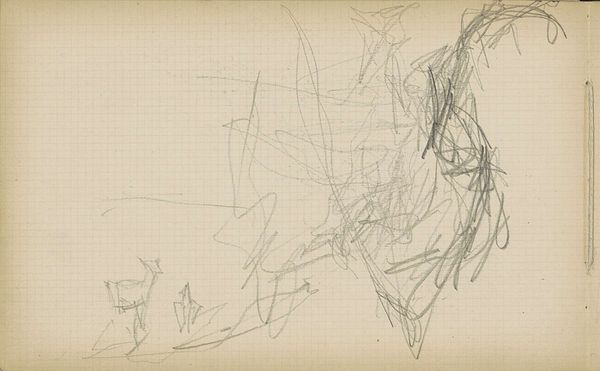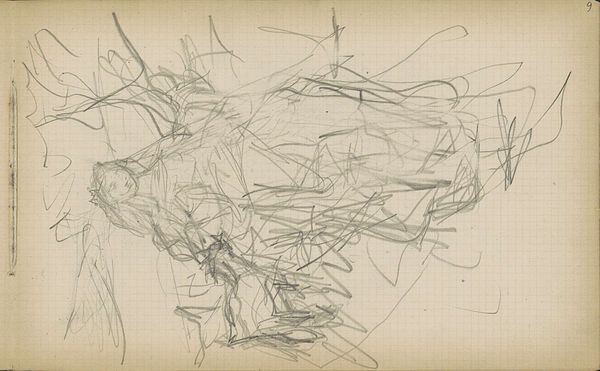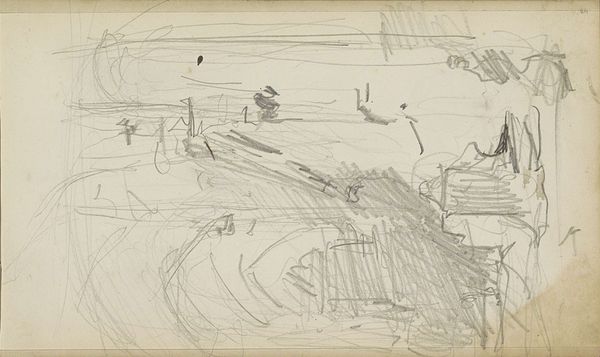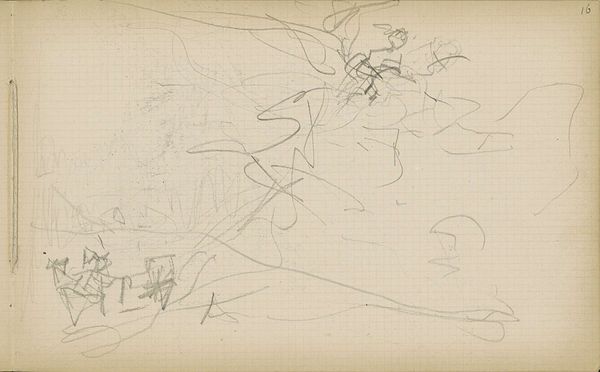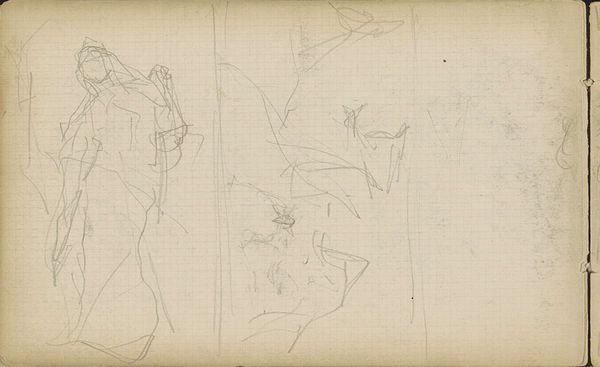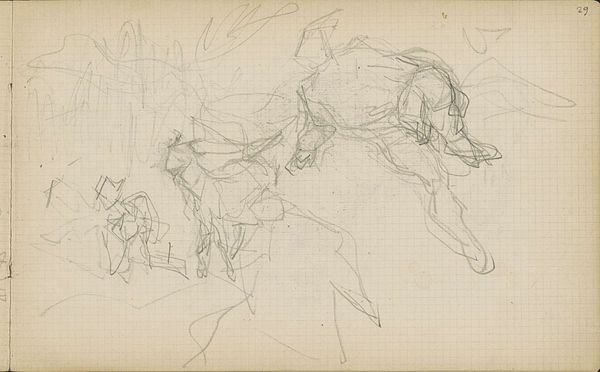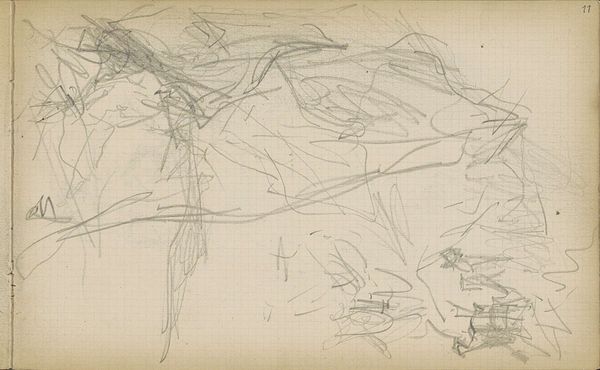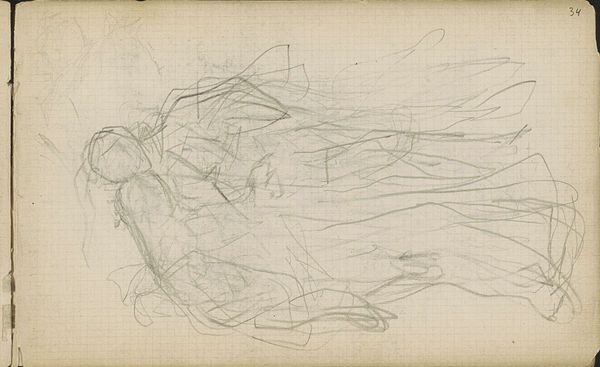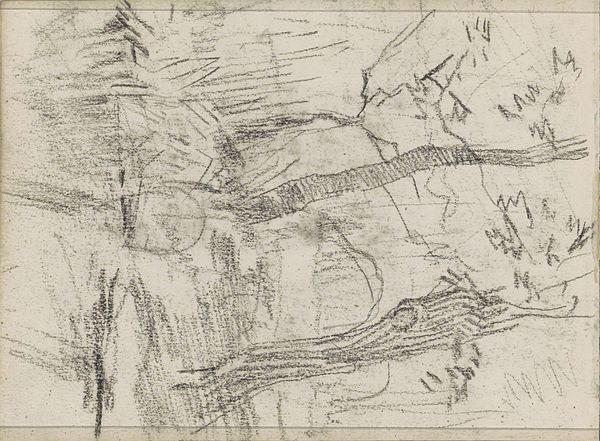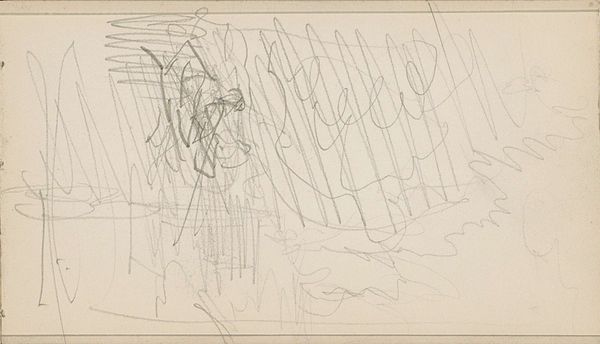
drawing, paper, pencil
#
drawing
#
amateur sketch
#
toned paper
#
light pencil work
#
impressionism
#
incomplete sketchy
#
landscape
#
paper
#
personal sketchbook
#
ink drawing experimentation
#
pen-ink sketch
#
pencil
#
abstraction
#
line
#
sketchbook drawing
#
sketchbook art
#
initial sketch
Copyright: Rijks Museum: Open Domain
Curator: At first glance, this work feels like a burst of raw energy, a flurry of marks on toned paper. There's something incredibly immediate about it. Editor: Indeed. What we are looking at is a study by Matthijs Maris, titled "Studie". The dating is rather broad, 1849-1917. It's currently housed at the Rijksmuseum. What is striking to me is that the artist created this on a common piece of grid paper, and primarily used a pencil. The choice of these mundane, mass-produced materials for art intrigues me. It makes one question the role of the final, "precious" art object, by emphasizing the artistic process as an activity. Curator: That grid certainly contextualizes the image; without it this looks like a frenetic Abstract Expressionist gesture, or an example of art informel. With it, you can sense a guiding hand, or at least the attempt at order. It also demystifies art-making, as well. Here we see art existing as simply drawing in a notebook with readily accessible supplies and not a finalized masterwork meant for the wall. Editor: Precisely! This almost undermines traditional notions of artistic genius as existing separately from societal accessibility of materials and tools. Look at the different pressures applied to the pencil, or the slight blurring—the material gives texture but also resistance to complete rendering. Do you think the location where it was produced affects the outcome in any way? Curator: Inevitably. Personal sketchbooks serve as intimate archives and reflect social conditions indirectly through material scarcity, costs, or sheer physical limitations. The Rijksmuseum website calls this an ink drawing experimentation. If we take their designation at face value, that too can be a hint toward its history as a moment for Maris to use cheap materials to test new techniques or styles, without worrying too much about societal or market pressures. Editor: This kind of initial sketch demonstrates the material exploration artists undergo, the everyday making and experimenting that often gets hidden when artwork enters the mainstream. Thanks for bringing the image to our attention, with this additional information, its inherent meaning is enriched for our guests. Curator: My pleasure! And I agree, recognizing art's foundation in the tangible—the paper, pencil, and the sketchbook—is essential to truly appreciate it. Hopefully visitors can now leave with a greater consideration of what shapes the creative process for both the artists and themselves.
Comments
No comments
Be the first to comment and join the conversation on the ultimate creative platform.
